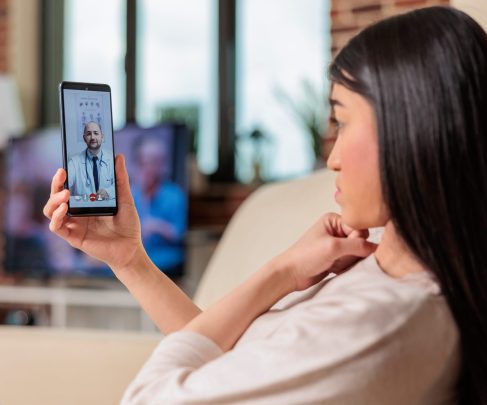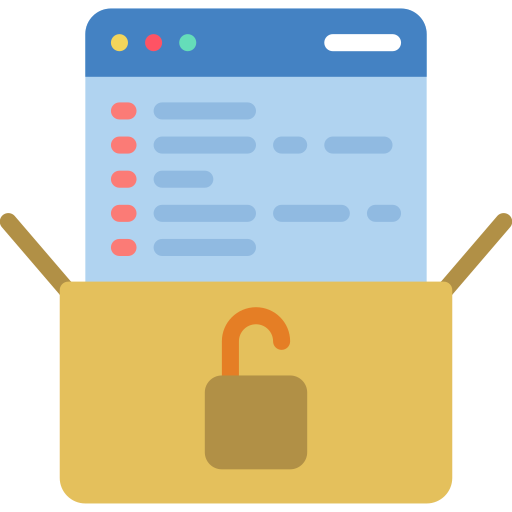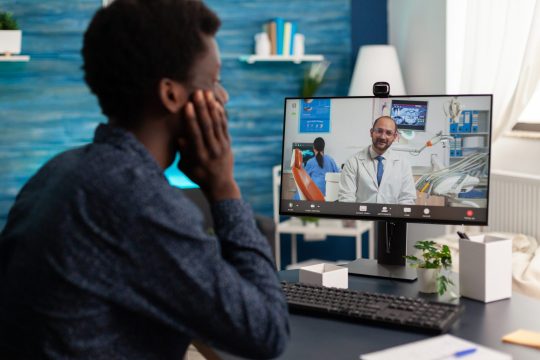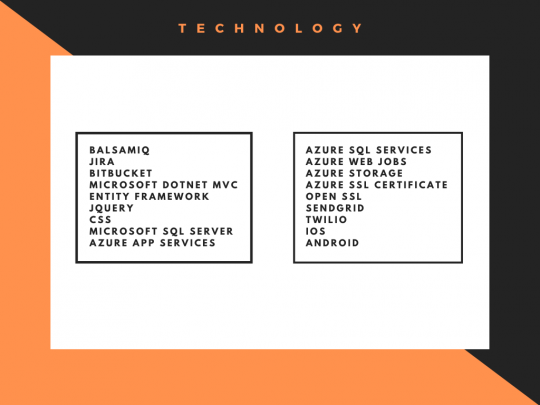Synaptek: Making Innovative Strides in Canadian Healthcare
- Case Studies,
- Research Papers

Telehealth Can Be Provided via a Smartphone: Telehealth services can be made more accessible by utilizing mobile phone capabilities, provided that the phone has audio and video capabilities that can be used for two-way, real-time interactive communication.
Data Security is a Priority: The patient data is of utmost importance. Due to the sensitive nature of the information transmitted, it is crucial that security and privacy are the top priorities when working with telehealth services.
Understand the market needs thoroughly: The existing health domains have established routines and procedures so it is important to understand the workflows. The technology should follow the workflow.
User experience is critical to success: The UI/UX should be simple, easy to interact with and certain features should be prioritized to so that they are easily identifiable in case of emergencies. The patient’s experience should be as seamless as a personal visit to a doctor.
Who is Synaptek?
Synaptek’s mission is to create healthcare delivery solutions that are efficient, intuitive, accessible, secure and cost effective. When founders Dr. Sundren Govender and Paul Lechner recognized that health care delivery and the technology used was not keeping pace with the ever-changing needs of patients, they decided that they could create an efficient and effective solution.
As two professionals who were well versed in the technology and health care industries, they teamed up to bring a practical solution to Canadian practitioners, with the intention of improving access to medical care, enhancing the quality of care and delivering better health outcomes to communities.
Synaptek’s challenge was to develop the right solution that would save medical practices costs and increase their operating capabilities by increasing efficiency. If this was achieved, practitioners & medical office assistants would be able to do more with their time and their abilities to better serve patients would increase. They would be able to streamline their operations and back end functions, and therefore be able to spend more time actually seeing and healing people within the communities who need medical expertise.
Synaptek’s vision was to create a project management software that included a suite of applications to help healthcare offices function more efficiently, streamline communication, and improve the patient experience. The company also wanted to develop a telehealth application that allowed doctors to offer consulting services to patients remotely, via video conferencing.
The Project Priorities
1) Synaptek was looking for a relatively quick turnaround time for the delivery of a minimally viable product – they wanted user feedback as quickly as possible so that they could iterate the concept.
2) The product needed to comply with Canada’s strict residency and privacy laws. Due to the sensitive nature of the information and industry, the technology would need to be 100% secure. Privacy was a major priority of the project.
3) The platform had to actually aid healthcare providers increase their revenues by improving operational efficiency and staff productivity. It needed to be clear what the correlation between the technology and efficiency was.
4) Synaptek was founded by two passionate, dedicated founders – as with many start-ups, their idea needed to be created within a conservative budget. From a development perspective, the technology partner needed to be very mindful and aware of the cost constraints and ensure that the development costs were kept low.
5) The application needed to be intuitive and seamlessly integrated. The medical environment is often fast-paced and one where every minute counts. It relies on precision, expertise and organization. Synaptek’s platform would need to reflect this.The technology could not be difficult to navigate or glitchy, because it would hinder the operation instead of enhance it.
6) The product would need to suit all demographics and be simple to integrate with existing systems and practices. Due to the nature of the healthcare industry, onboarding could not be a time-intensive process. Any healthcare professional, no matter what their exposure to technology, would need to be able to gain a functional understanding of the uses of the platform and be able to perform workflows with minimal troubleshooting.
The Process
Dr. Govender recognized he would require a team with a very specific skill set to bring this idea to market. He reached out to AOT because of our experience in the government and healthcare industries, as well as our expertise in custom software development.
Alongside Dr. Govender and Paul Lechner, we set out to disrupt the Canadian healthcare industry by creating Canada’s first multi discipline and multichannel healthcare communication application.
Our mission was:
“…to achieve the best-possible health outcomes by improving communication between healthcare providers and their patients, using advanced technology. We are committed to providing communication solutions tailored to meet the specific and ever-changing communication needs of our clients and their patients in innovative and cost-effective ways. We will build value for any practice through the strength of our technology, coupled with our insights and superior support.”
— Synaptek Team
The Project Execution
In order to ensure project costs were feasible for a startup, we offered the Synaptek team an onsite-offshore model. In this model, a local business analyst worked with the Synaptek team to understand their needs and the system requirements. To keep costs low, our offshore development team did the bulk of the work, adding extra developers to speed up the development timeline as necessary.
When we work with a client, we really value their partnership and work to create a plan that works for both parties. Bearing this in mind, we provided complimentary design services to ensure that the right product would be built the first time around. As the Synaptek team was already 18 months behind schedule, we recognized the importance of laying out excellent designs and clear requirements early on in the process so that they would not need to backtrack.
“The team’s constant consultation and complimentary services were advantageous for our timeline. Their diligent follow-up included: continually updated price points, suggestions based on ongoing brainstorming, and rolling options for workflow and budget adjustments. Although our lost 18 months were detrimental, this team’s efforts put us back on track.” — Dr. Govender, Synaptek CEO
In a period of 16 months, our team was able to take Synaptek from mind to market. We created the cloud-based solution using Microsoft Azure. The sixteen months was broken down into two phases: the first phase was focused on the project management software that included several sub-applications and the second phase consisted of creating the telehealth application. Each respective phase took about eight months to get to a minimum viable product level for each solution. In order to achieve this status within this time frame, our team was very flexible, working around Dr. Govender’s full-time hours at his clinic.
The Final Product
The project management software was built to provide clinics with a suite of applications to manage patient communication in one centralized application. The applications include:
- The patient reminder application is used by medical office assistants to manage clinics and practices. It sends automatic and escalating appointment reminders to patients in their preferred method–email, text, or IVR. This application helps health care providers reduce no-shows that affect their operational efficiency, and improves collection of no-show fees.
- Advanced access and virtual waitlists give patients the option to waitlist themselves virtually or sign themselves up for same-day appointments. This reduces wait times, allows medical staff to triage more effectively, reduces appointment administrative time, and improves patient satisfaction.
- Secure messaging and file transfer allows for more efficient health communications. This application provides messaging services with built-in workflows and control features that are designed for the healthcare environment. Staff can share documents like PDFs, requisition forms, prescriptions, and images.
The telehealth application allows doctors to offer individual or group consulting to patients across distances through real-time high-definition video conferencing. With the telehealth application, practitioners can drive a new revenue source and boost patient satisfaction, improving efficiency with instant access to standby patients, and even attend to multiple patients at a time.
This also makes healthcare available to more communities. Smaller communities who may not have access to specialists can use the platform to have real-time conversation with specialized medical personnel, which can reduce costs to the healthcare system and to individuals, as well as reduce wait times to see specialists without compromising on quality of care. The telehealth application can also make medical care more accessible to people who cannot physically go to medical clinics. Those who cannot transport themselves to clinics and hospitals but require regular medical attention can use the video features to access the help they need.
Synaptek tools have been very well received by local healthcare workers. Substantial decreases in workload have been reported by healthcare office assistants, and doctors can more efficiently attend to their patients.
Business Results
Synaptek tools have been very well received by local healthcare workers. Substantial decreases in workload have been reported by healthcare office assistants, and doctors can more efficiently attend to their patients.
The following points highlight their effectiveness:
- The reminder application has been proven to reduce no-shows by 90%, and decrease front-office workload by 40%
- Office assistants report reduced burden of repetitive tasks, decreasing the risk of staff burnout and turnover
- The advanced access and virtual waitlist applications can reduce front-office workload by 30%
- With the telehealth communication application, doctors can attend to multiple patients at once and consult patients who are unable to visit the practice in-person
We continue to work together with Synaptek to consistently update and improve the tools, offering regular enhancements to practitioners.
Technology
The system was built using the Microsoft Azure suite and incorporated third party solutions where appropriate to ensure quick delivery MVP delivery.
To meet the project requirements and ensure on-time delivery, the AOT team decided on the following suite of tools and technologies:











